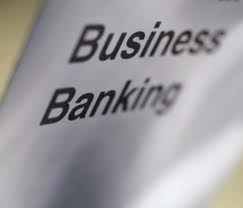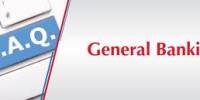The Term “Bank” & “Banking Business”:
Bank: Origin of the word:
S.N Maheshwari says in his book named “Kalyani’s Banking Law and Practice”:
There seems to be no unanimity amongst the economists about the origin of the word ‘Bank’. According to some economists, the word Bank has been derived from the German word ‘BANC’ which means a joint stock firm. While others say that it has been derived from the Italian word ‘BANCO’ which means a heap or mound. As a matter of fact, at the time of establishment of Bank of Venice in 1157, the Germans were influential and hence, perhaps the word ‘BANC’ or ‘BANCO’ was used by Italians to denote the accumulation of securities or money with a joint stock firm which later on with the passage of time came to be known as ‘Bank’.
According to Syed Ashraf Ali:
Bank is “any financial institution that receives, collects, transfers, pays, exchanges, lends, invests, or safeguards money for its customers.” This definition includes many other financial institutions that are not usually banks but which nevertheless provide one or more of these broadly defined banking services. These institutions include finance companies, leasing companies and investment banks and insurance companies.
According to” Law Encyclopedia”
Bank means “Authorized financial institutions and the business in which they engage, which encompasses the receipt of money for deposit, to be payable according to the terms of the account; collection of checks presented for payment; issuance of loans to individuals who meet certain requirements; discount of commercial paper; and other money-related functions.”
According to “Banking Dictionary”
Bank Means “Organization, usually a corporation, that accepts deposits, makes loans, pays checks, and performs related services for the public. Several Acts defines a bank as any depository financial institution that accepts checking accounts (checks) or makes commercial loans, and its deposits are insured by a regulatory agency.
Banking:
According to “The Columbia Encyclopedia, Sixth Edition-2008”
Banking means “The business of dealing in money and instruments of credit. Banks were traditionally differentiated from other financial institutions by their principal functions of accepting deposits—subject to withdrawal or transfer by check—and of making loans.”
In other words banking means a system of trading in money which involved safeguarding deposits and making funds available for borrowers, banking developed in the middle Ages in response to the growing need for credit in commerce.
According to “English common law”
A banker is defined as a person who carries on the business of banking, which is specified as:
- Conducting current accounts for his customers
- Paying cheques drawn on him, and
- Collecting cheques for his customers.
Evaluation of Banking:
The detailed history of Bank varies widely from country to country, the earliest banks were not the same kind of institutions that we have today. Currently, banks serve both deposit and lending functions; that is, they issue liabilities that are a convenient medium of exchange, and are intermediaries between borrowers and lenders. The great early banking houses loaned out their own capital, not other people’s money. There existed other specialized institutions that accepted deposits for safekeeping. It is only later that the two functions, lending and deposit taking, were fused into banking institutions–usually connected to the needs of the sovereign for financing expenditures.
The business of banking is as old as the civilization itself. A simple form of banking was practiced by the ancient temples of Egypt, Babylonia, and Greece, which loaned at high rates of interest the gold and silver deposited for safekeeping. As early as 2,000 B.C., the Babylonians had developed a system of banks. They used their temples for lending at higher rates of interest. Around the same time, the Greek temples were used as depositories for people’s surplus funds and these were the centers of money lending transactions. The priests of the temples acted as financial agents till they lost public confidence on account of people’s disbelief in religion. Private banking existed by 600 BC and was considerably developed by the Greeks, Romans, and Byzantines. Medieval banking was dominated by the Jews and Levantines because of the strictures of the Christian Church against interest and because many other occupations were largely closed to Jews. During the early periods, although the banking business was mostly done by private individuals, many countries established public banks either for the purpose of facilitating commerce or to serve the Government. The forerunners of modern banks were frequently chartered for a specific purpose, e.g., the Bank of Venice (1171) and the Bank of England (1694), in connection with loans to the government; the Bank of Amsterdam (1609), to receive deposits of gold and silver. Banking developed rapidly throughout the 18th and 19th cent., accompanying the expansion of industry and trade, with each nation evolving the distinctive forms peculiar to its economic and social life.
Operations and Functions of Bank:
A bank acts as a middleman between suppliers of funds and users of funds, substituting its own credit judgment for that of the ultimate suppliers of funds, collecting those funds from three sources: checking accounts, savings, and time deposits; short-term borrowings from other banks; and equity capital. A bank earns money by reinvesting these funds in longer-term assets. A Commercial Bank invests funds gathered from depositors and other sources principally in loans. An investment bank manages securities for clients and for its own trading account. In making loans, a bank assumes both interest rate risk and credit risk; market rates may raise above the Net Interest Margin a bank earns on its loan portfolio and investments, and borrowers may default.
Wider commercial role:
The commercial role of banks is not limited to banking, and includes:
- issue of banknotes (promissory notes issued by a banker and payable to bearer on demand)
- processing of payments by way of telegraphic transfer, EFTPOS, internet banking or other means
- issuing bank drafts and bank cheques
- accepting money on term deposit
- lending money by way of overdraft, installment loan or otherwise
- providing documentary and standby letters of credit (trade finance), guarantees, performance bonds, securities underwriting commitments and other forms of off-balance sheet exposures
- safekeeping of documents and other items in safe deposit boxes
- currency exchange
- acting as a ‘financial supermarket’ for the sale, distribution or brokerage, with or without advice, of insurance, unit trusts and similar financial products
Economic functions:
The economic functions of banks include:
- Issue of money, in the form of banknotes and current accounts subject to cheque or payment at the customer’s order. These claims on banks can act as money because they are negotiable and/or repayable on demand, and hence valued at par. They are effectively transferable by mere delivery, in the case of banknotes, or by drawing a cheque that the payee may bank or cash.
- Netting and settlement of payments – banks act as both collection and paying agents for customers, participating in inter bank clearing and settlement systems to collect, present, be presented with, and pay payment instruments. This enables banks to economies on reserves held for settlement of payments, since inward and outward payments offset each other. It also enables the offsetting of payment flows between geographical areas, reducing the cost of settlement between them.
- Credit intermediation – banks borrow and lend back-to-back on their own account as middle men
- Credit quality improvement – banks lend money to ordinary commercial and personal borrowers (ordinary credit quality), but are high quality borrowers. The improvement comes from diversification of the bank’s assets and capital which provides a buffer to absorb losses without defaulting on its obligations. However, banknotes and deposits are generally unsecured; if the bank gets into difficulty and pledges assets as security, to rise the funding it needs to continue to operate, this puts the note holders and depositors in an economically subordinated position.
- Maturity transformation – banks borrow more on demand debt and short term debt, but provide more long term loans. In other words, they borrow short and lend long. With a stronger credit quality than most other borrowers, banks can do this by aggregating issues (e.g. accepting deposits and issuing banknotes) and redemptions (e.g. withdrawals and redemptions of banknotes), maintaining reserves of cash, investing in marketable securities that can be readily converted to cash if needed, and raising replacement funding as needed from various sources (e.g. wholesale cash markets and securities markets).
Organizational Structure of Bank:
Commercial banks assume many organizational shapes. Generally, they are organized as public limited companies with share holdings dispersed across a large section of the investing public with controlling interests held by small groups of sponsors. In Bangladesh, for instance, most of the commercial banks are owned by small family groups. They zealously guard their domain to prevent entry of outsiders until the Bank goes for IPO (Initial Public Offering) of Shares. Even when they issue shares to the public they generally adopt many ploys to maintain their stranglehold over the control of their enterprise. In many countries especially in the third world the ownership of some of the commercial banks is assumed by the government either exclusively or jointly with the general public.
Bank Financial Structure:
Banks are usually incorporated, and like any corporation must be backed by a certain amount of capital (money or other assets). Banking laws specify that banks must maintain a minimum amount of capital. Banks acquire capital by selling capital stock to shareholders. The money shareholders pay for the capital stock becomes the working capital of the bank. The working capital is put in a trust fund to protect the bank’s depositors. In turn, shareholders receive certificates that prove their ownership of stock in the bank. The working capital of a bank cannot be diminished. Dividends to shareholders must be paid only from the profits or surplus of the bank.
Shareholders have their legal relationship with a bank defined by the terms outlined in the contract to purchase capital stock. With the investment in a bank come certain rights, such as the right to inspect the bank’s books and records and the right to vote at shareholders’ meetings. Shareholders may not personally sue a bank, but they can, under appropriate circumstances, bring a stockholder’s derivative suit on behalf of the bank (sue a third party for injury done to the bank when the bank fails to sue on its own). Shareholders also are not usually personally liable for the debts and acts of a bank, because the corporate form limits their liability. However, if shareholders have consented to or accepted benefits of unauthorized banking practices or illegal acts of the board of directors, they are not immune from liability.
Bank Officials:
The election and term of office of a bank’s board of directors are governed by statute or by the charter of the bank. The liabilities and duties of bank officials are prescribed by statute, charter, bylaws, customary banking practices, and employment contracts. Directors and bank officers are both responsible for the conduct and honorable management of a bank’s affairs, although their duties and liabilities are not the same.
Officers and directors are liable to a bank for losses it incurs as a result of their illegal, fraudulent, or wrongful conduct. Liability is imposed for embezzlement, illegal use of funds or other assets, false representation about the bank’s condition made to deceive others, or fraudulent purchases or loans. The failure to exercise reasonable care in the execution of their duties also renders officials liable if such failure brings about bank losses. If such losses result from an error in judgment, liability will not be imposed so long as the officials acted in good faith with reasonable skill and care. Officers and directors will not be held liable for the acts of their employees if they exercise caution in hiring qualified personnel and supervise them carefully. Civil actions against bank officials are maintained in the form of stockholders’ derivative suits. Criminal statutes determine the liability of officers and directors for illegal acts against their bank.
Banking Business in Bangladesh:
Bangladesh shares a common past with India and Pakistan in respect of development of the business of banking. Historians try to trace the origin of banking to the Vedic age. The writings of Manu bear testimony to what can be called a crude form of banking. The reference to the business of banking, albeit again of rudimentary form, could be found in the Kautillya’s “arthoshastro”. These ‘banks’ were in fact family run enterprises. With the advent of Muslim rule in India the fortune hunting Afghan traders started money lending business in exchange of interest sometime in 1312 A.D. They were known as “Kabuliawallas”.
History:
The banking system at independence consisted of two branch offices of the former State Bank of Pakistan and seventeen large commercial banks, two of which were controlled by Bangladeshi interests and three by foreigners other than West Pakistanis. There were fourteen smaller commercial banks. Virtually all banking services were concentrated in urban areas. The newly independent government immediately designated the Dhaka branch of the State Bank of Pakistan as the central bank and renamed it the Bangladesh Bank. The bank was responsible for regulating currency, controlling credit and monetary policy, and administering exchange control and the official foreign exchange reserves. The Bangladesh government initially nationalized the entire domestic banking system and proceeded to reorganize and rename the various banks. Foreign-owned banks were permitted to continue doing business in Bangladesh. The insurance business was also nationalized and became a source of potential investment funds. Cooperative credit systems and postal savings offices handled service to small individual and rural accounts. The new banking system succeeded in establishing reasonably efficient procedures for managing credit and foreign exchange. The primary function of the credit system throughout the 1970s was to finance trade and the public sector, which together absorbed 75 percent of total advances.
The number of banks in all now stands at 49 in Bangladesh. Out of the 49 banks, four are Nationalized Commercial Banks (NCBs), 28 local private commercial banks, 12 foreign banks and the rest five are Development Financial Institutions (DFIs).
Banking System in BD:
At the moment financial sector reform programs are underway. Private Banks and insurance companies with few exceptions are functioning creditably. Uttara, Pubali and Rupali Banks which were formally owned by the GOB were privatized. Shadaran Bima Corporation’s (General Insurance) 49% shares are contemplated to be off loaded in the local stock markets soon.
Bangladesh pursues a liberal market economy. Bangladesh Bank is the apex bank of the country responsible for promoting healthy growth and development of the banking system. Banks and insurance companies, both in the private and public sectors, are operating freely and contributing to the economy. Foreign banks like HSBC Bank, Standard Chartered Bank, Citi NA Bank, etc. function in Bangladesh through their branches.
International Banks:
The World Bank has taken the lead in addressing some of the most deep-seated structural constraints in Bangladesh’s economy by providing productive employment for those without assets, promoting economic opportunities for women, and addressing the social and economic inadequacies of education, health, nutrition, and population programs. Among aid projects were the Irrigation Management Program, which supports drainage and flood control as well as the introduction of pumps and drills; support for maintenance of the nation’s more than 43,000 primary schools (including repairs to existing buildings, additions to accommodate larger numbers of pupils, and construction of new schools where needed); and the 500,000-ton Ashuganj fertilizer complex, utilizing domestic natural gas, which came on stream in 1981. The World Bank has made loans to Bangladesh only from its “soft window,” the International Development Association.
Regulatory Authority of Banking Industry in BD:
Bangladesh Bank is a typical central bank of a third world country with a medley of tasks on its agenda. These agenda include not merely issuing notes and controlling supply of money but also the responsibility to act as the holder of gold and currency reserves, banker to the government, lender of the last resort, supervisor of the banking system, overseer of national credit policy, promoter of credits to agricultural and other important socio-economic sector and administrator of exchange control.
Bangladesh Bank
Bangladesh Bank (BB) has been working as the central bank since the country’s independence. Its prime jobs include issuing of currency, maintaining foreign exchange reserve and providing transaction facilities of all public monetary matters. BB is also responsible for planning the government’s monetary policy and implementing it thereby.
The BB has a governing body comprising of nine members with the Governor as its chief. Apart from the head office in Dhaka, it has nine more branches, of which two in Dhaka and one each in Chittagong, Rajshahi, Khulna, Bogra, Sylhet, Rangpur and Barisal.
Banking Legislations of BD:
The Banking Companies act, 1991, has been the most important piece of legislation enacted in BD to define all aspects of operation of banking institutions and regulations of their activities by regulatory authorities. This important landmark was preceded by a medley of laws passed by the parliament and Presidential Ordinances and Orders enacted or promulgated during the British and later Pakistan eras. The Banking Companies Act, 1991 assigns important role to Bangladesh Bank to regulate as well as supervise the activities of the banks in BD.
Bangladesh Bank Order, 1972:
In addition to the Banking Companies Act, 1991, Bangladesh Bank Order, 1972 also contains a few provisions about regulating some aspects of banking operation.
Islami Banking:
In Muslim countries, where Islamic law forbids payment of interest, financial markets are limited by religious variables. Although some countries have attempted to circumvent these laws, the emergence of “Islamic banks” may provide a solution to the problems of poverty
and underdevelopment, continuing growth of commerce throughout the world and the need for more varied forms of lending and enticements to save or invest have led to the international Banking industry we know today. Many conventional banks in the western world have also opened separate windows to conduct banking on the Islamic mode to attract business from the oil rich Arabs and other Muslim Countries.
The present state of Islamic Banking represents a phase that started almost four decades ago in a number of countries around the world with different innovating styles, motivations, and incentives. In the early 1960s, countries such as Algeria and Egypt attempted to establish Islamic banks. None existed long enough to produce results. Islamic banks or financial institutions are defined here as those that adhere to the concepts of Islamic law. This form of banking revolves around several well-established principles based on Islamic canons. All banking activities must avoid interest, a concept that is forbidden in Islam. Instead, the bank earns profit (markup) and fees on the financing facilities that it extends to customers.
Islami Banking in BD:
Bangladesh joined the caravan of Islamic banks in 1983 when a Sharia based bank-Islamic Bank Bangladesh Ltd.-was established as a joint venture bank. Since then several banks have been established, Al-Arafah Islami Bank, Shahjalal Islami Bank, and Social Investment etc. One commercial bank-EXIM Bank Ltd. and First Security Bank Ltd. recently chartered as conventional interest based bank has switched to Islamic system of banking. Some banks have also opened separate Islamic windows to seek patronage of the people of Bangladesh who by and large attach a stigma to conventional interest based banks. By now the Islamic banks have carved out a nice niche in the banking arena in terms of collecting deposits and provide finances to a large number of entrepreneurs and investors.
Conceptual Framework:
Islamic financial practices are built around the belief that money is not an earning asset in and of itself. The system can only be understood in the context of Islamic attitudes towards ethics, wealth distribution, social and economic justice, and the role of the state. Principles encouraging risk sharing, individual rights and duties, property rights and the sanctity of contracts are all part of the Islamic code underlying the banking system.
Bibliography:
















